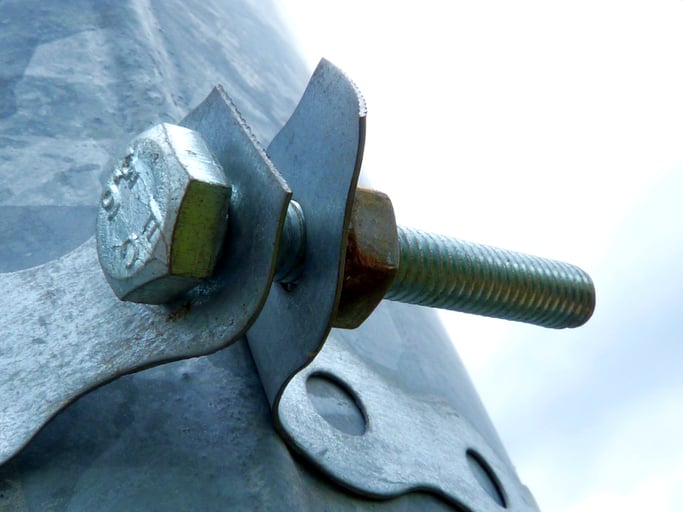
Let’s face it: Sometimes piping just doesn’t fit in well with its surroundings. Sometimes it needs to be distanced from a wall or ceiling. Maybe you need it lifted off a corrosive beam or floor. After all, exposure to microbes, water, or the wrong type of metal can destroy piping.
Here’s where steel pipe clamps can be heroic. They make it possible to lift, isolate, and hang pipes securely. However, there are some important dos and don’ts when it comes time to install these sturdy go-to's.
What Is a Steel Pipe Clamp?
Steel pipe clamps are metallic supports that clamp around a pipe. They are usually made up of two bent pieces of steel that can form around part of the pipe’s outer circumference. When they’re secured with bolts on opposite ends of the metal shackles, they form fully around the pipe.
How to Use Steel Pipe Clamps
Steel pipe clamps can be lifesavers for engineers who need to work around objects or incompatible surfaces. That’s because pipe clamps can insulate piping without adding physical barriers. They also provide support and stop pipes from swaying, drooping, vibrating, and breaking.
One popular way to use steel pipe clamps is to pair them with threaded rods. You can use a clevis and rod to suspend piping within the steel clamp. With this combination, steel pipe clamps let you hang pipes from an overhead beam or surface.
Still, steel pipe clamps don’t have to be hanging to protect piping from its surroundings. Pipe clamps can also be welded to a pipe shoe. This elevates the piping and makes it easy to adjust. Once a clamp is welded to a pipe shoe, you can simply undo bolts, lift the clamp’s outer half, lay in piping, and re-secure the bolt.
Those are a few common ways steel pipe clamps can be used, but there are some important things to take note of during the installation process. Here are three rules for installing steel pipe clamps successfully:
1. Be Mindful of Metals
Using steel pipe clamps can be a good way to avoid corrosion. It can help you keep dissimilar metals away from one another by isolating the piping. However, it’s also important to make sure your steel pipe clamp isn’t made of a metal that will corrode or cause corrosion on the pipe itself.
A simple way to protect both the pipe and the clamp is to add the right finishing. Before installation, it’s a good idea to see if the manufacturer provides carbon steel, stainless steel, or hot-dip galvanized finishes.
2. Watch Your Spacing
During installation, it’s important to make sure the pipe isn’t fit too loosely or too tightly. A loose pipe will sag or bend, which can lead to wear and broken pieces. The recommended spacing between the pipe and clamp often depends on the pipe’s weight. Also, it’s smart to remember piping can expand and contract as it heats up or cools down.
How do you get it right?
Your manufacturer should supply a chart with load limits and instructions for each product. If they go missing, make sure to ask about specifics before starting installation.
3. Fasten Bolts with Care
When you’re suspending piping, it can be nerve-wracking. After all, if fasteners fail, structures could come crashing down. A key way to avoid failed fittings is to make sure you’re precise when you tighten the nuts to the bolts. Too tight, and you could strip them. Too loose, and clamps could come undone when pipes vibrate.
Luckily, there are torque standards and online torque calculators you can use to get it right. It’s worth double-checking before snugging up clamps.
Finding Quality Steel Pipe Clamps
These tips should help you get the most out of steel pipe clamps. Wondering where you can get quality clamps or help with a project? Connect with us here to talk about your next job.






